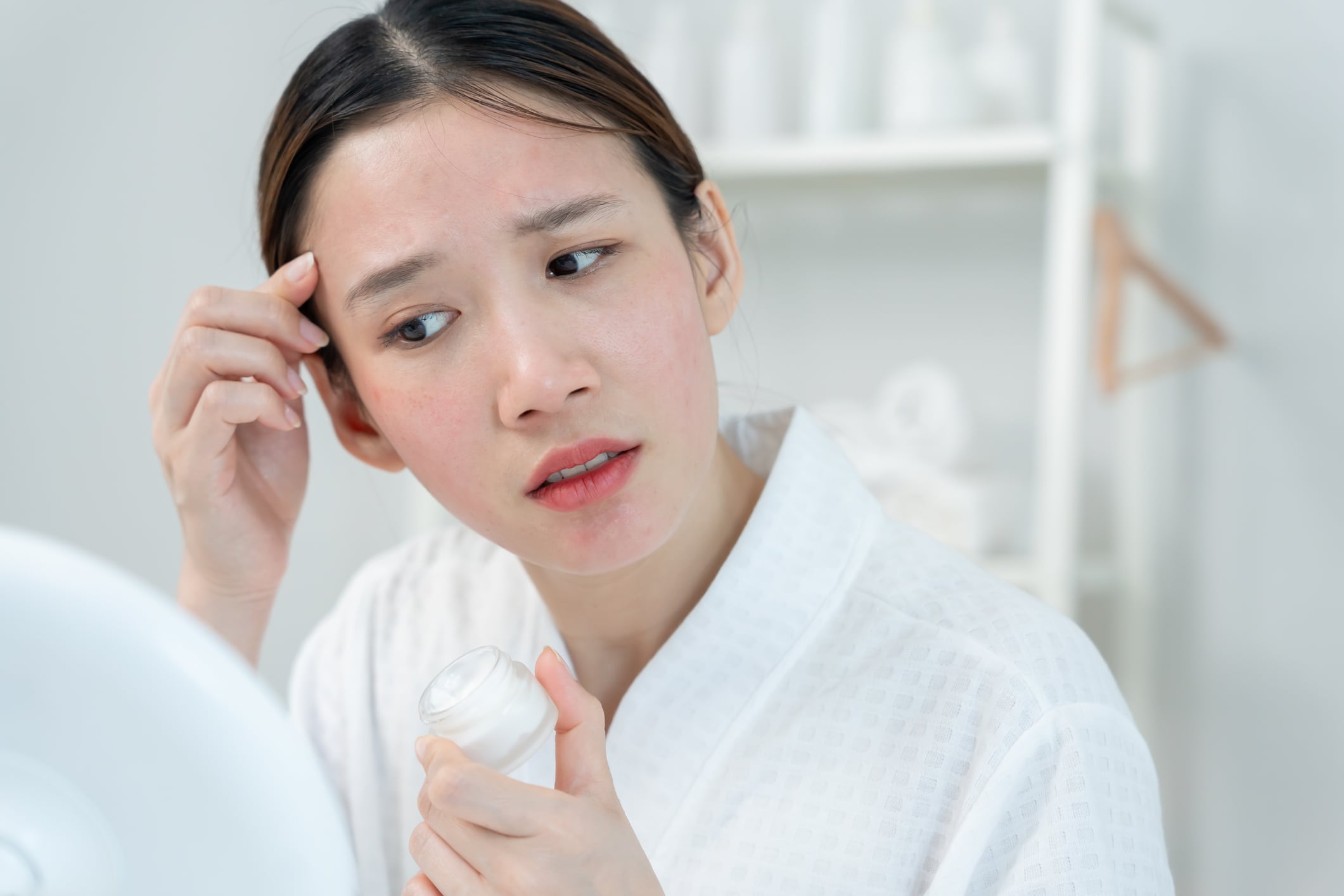According to an in vitro study conducted by researchers at Kyung Hee University and green bio venture company iNGR, both pure ε-viniferin and a branded extract sped up fibroblast movement, increased pro-collagen type I, and reduced enzymes that break down collagen.
The branded extract, Vino Chocolate, supplied by iNGR, is made from Vitis labruscana ‘Campbell Early’ grape flower cells.
Bioreactor production avoids field harvesting and seasonal limits, and controlling nutrients and conditions can optimise viniferin output. This method lowers pesticide risks, reduces variability and supports scalability — key for quality and regulatory approval.
The actives also raised levels of filaggrin, a protein that strengthens the skin’s barrier and water-holding capacity. These results led the study’s authors to state that these results positioned ε-viniferin as a flexible active for repair, barrier support, and anti-ageing.
Why this matters for R&D and sourcing
The same cell model showed multiple benefits at once: faster wound closure, higher collagen precursors, lower collagen-degrading enzymes, and stronger barrier signals.
This could be significant for R&D and sourcing, as a single active offering multiple functions can simplify formulations and claims.
The extract also came from grape flower cell cultures grown in bioreactors and not field-grown plants. This allows for steadier supply, controlled quality, and a sustainability angle.
While resveratrol is crowded in the market, viniferin is less explored, giving suppliers room to build a distinct science and marketing story if future studies confirm the results.
What the researchers found
The tests showed that the extract contained a high amount of ε-viniferin (about 548ppm). It also had a small amount of resveratrol, while another related compound, δ-viniferin, was not found. Other plant compounds were present in smaller amounts.
At high doses (10ppm), the actives started to stress or damage the cells, so the researchers limited further tests to 5ppm or less. For early development work, the safe range looks to be between 0.1 and 5ppm. Both the pure ε-viniferin and the extract helped skin repair cells (fibroblasts) move more quickly to close scratches in lab tests.
At 1ppm, ε-viniferin improved wound closure to about 120% of normal, while the extract reached about 127%. These results were close to the positive controls, suggesting potential for wound healing and skin-repair products. The same dose roughly doubled the amount of pro-collagen type I, the building block for collagen, slightly outperforming a known positive control.
The extract also boosted pro-collagen, though less strongly (about 87% higher than untreated cells). This pointed to stronger, firmer skin and anti-ageing benefits. At the same time, both the pure compound and the extract lowered enzymes (MMP-1 and MMP-3) that normally broke down collagen.
The strongest effects were seen at 5ppm — in some cases, matching or even beating retinoic acid, a common anti-ageing ingredient. By reducing these enzymes, the actives may help slow skin ageing and loss of firmness.After 72 hours at 5ppm, both actives raised levels of filaggrin, a protein that helps strengthen the skin barrier and improve its ability to hold water.
Guidance for developers
The researchers recommended starting with very low doses when working with ε-viniferin. Early screening should begin between 0.1 and 1ppm and only increase to 5ppm if the formulation shows good tolerability. Tests above this level may put stress on skin cells, which raises safety concerns.
Formulators should also consider stability challenges. As viniferins are polyphenols, they are prone to oxidation, which can reduce effectiveness over time. To manage this, antioxidant systems, oxygen control, and pH stabilisation are advised. Developers may also need to explore delivery systems that improve solubility and ensure the compound is available to the skin without triggering irritation.
Compatibility is another factor. If viniferin is combined with strong actives such as retinoids, exfoliating acids or other potent ingredients, formulators should carefully test for cumulative irritation. The grape cell extract used in this study contains co-actives that could enhance effects, but these may also make troubleshooting more complex during product development.
When it comes to claims, the authors cautioned that companies should stick to cosmetic positioning supported by the available evidence. Suitable claims include supporting the skin’s natural repair process, helping maintain collagen, or reinforcing barrier proteins. Importantly, all claims should be qualified as being based on in vitro (cell model) results until further testing is done in humans.
Bottom line
The study’s authors also stressed that companies looking to develop ε-viniferin-based products should begin by repeating the in vitro tests with their own production batches. This would help confirm that the results were consistent and reproducible outside the original research setting.
From there, the logical next step is to move into ex vivo testing. Using human skin explants, developers can measure key markers such as filaggrin, collagen production and the activity of collagen-degrading enzymes (MMPs). Barrier recovery can also be tracked through methods like transepidermal water loss (TEWL) testing, which would give a clearer picture of how the active supports skin function.
Small-scale clinical studies are another priority. Straightforward designs, such as split-face or split-forearm trials, can provide early evidence on how ε-viniferin performs in people. These studies should measure outcomes like redness reduction, barrier recovery and visible improvements captured through high-resolution skin imaging.
At the same time, stability and compatibility testing are critical. Viniferins may be sensitive to light, heat, and pH, so understanding how the ingredient behaves under stress is essential. Compatibility with common skin care ingredients such as niacinamide, ceramides and panthenol must also be confirmed to avoid formulation problems down the line.
Finally, companies preparing to commercialise viniferin extracts must assemble comprehensive regulatory documentation. This includes specifications, validated analytical methods, data on residual solvents and heavy metals, and clear records of process controls. For bioreactor-derived ingredients, demonstrating consistency and traceability in manufacturing will be especially important for meeting regulatory and quality standards.
The researchers concluded: “The well-defined molecular efficacy of ε-Viniferin and the synergistic activity of Vino Chocolate collectively underscore their potential as multifunctional bioactive ingredients in cosmeceutical applications.
“Given their promising in vitro efficacy and favourable biocompatibility profile, further in vivo and clinical investigations may help clarify their potential role in supporting skin regeneration through advanced cosmetic formulations.”
Source: Cosmetics
“Effects of ε-Viniferin and ε-Viniferin-Enriched Extract from Vitis labruscana B. ‘Campbell Early’ Cell Cultures on Wound Healing and Epidermal Barrier Restoration in Human Skin Cells”
https://doi.org/10.3390/cosmetics12050181
Authors: Daeun Kim, et al.




